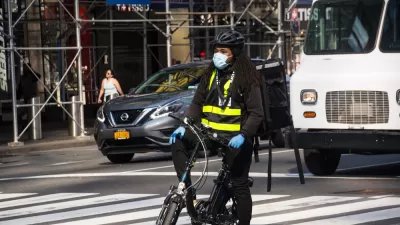Examining the immense scale of the challenge in delivering clean drinking water to everyone in the world.

Jonathan Doyle reports on the challenges facing the United Nations' plans to achieve universal access to safe drinking water around the world, and the progress made so far toward that goal.
The goal, included among 17 Sustainable Development Goals (SDGs) adopted by the UN in 2015, is stated as, "Achieving universal access to water sources that are improved, with a round trip for water collection not exceeding 30 minutes, safe from contamination, and available when needed," with a target date of 2030.
The challenge is daunting. According to data cited by Doyle, 785 million around the world did not have access to basic water services in 2017. About 144 million people were collecting water directly from surface water sources in 2017. Finally, at least 2 billion people get their water from a source contaminated by feces.
For signs of progress on the clean water SDG, Doyle points first to the United States, with the Safe Drinking Water Act (SDWA) approved in 1974 and amended in 1996 (unmentioned are the failures of that law to protect the people of Flint, to cite one conspicuous example). At the international level, Doyle points to work by the United Nations and the World Health Organization. But the most significant achievements are credited to NGOs such as World Vision, which claims to have delivered sustainable, clear water to 20 million people as of 2020. Finally, Doyle credits the private sector with achievements in water filtration technologies that are also providing benefits around the world.
[Disclaimer: the end of the article shifts to content marketing for water filtration systems.].
FULL STORY: Safe Drinking Water In 2021: Progress Made But So Much Further To Go

Alabama: Trump Terminates Settlements for Black Communities Harmed By Raw Sewage
Trump deemed the landmark civil rights agreement “illegal DEI and environmental justice policy.”

Planetizen Federal Action Tracker
A weekly monitor of how Trump’s orders and actions are impacting planners and planning in America.

The 120 Year Old Tiny Home Villages That Sheltered San Francisco’s Earthquake Refugees
More than a century ago, San Francisco mobilized to house thousands of residents displaced by the 1906 earthquake. Could their strategy offer a model for the present?

In Both Crashes and Crime, Public Transportation is Far Safer than Driving
Contrary to popular assumptions, public transportation has far lower crash and crime rates than automobile travel. For safer communities, improve and encourage transit travel.

Report: Zoning Reforms Should Complement Nashville’s Ambitious Transit Plan
Without reform, restrictive zoning codes will limit the impact of the city’s planned transit expansion and could exclude some of the residents who depend on transit the most.

Judge Orders Release of Frozen IRA, IIJA Funding
The decision is a victory for environmental groups who charged that freezing funds for critical infrastructure and disaster response programs caused “real and irreparable harm” to communities.
Urban Design for Planners 1: Software Tools
This six-course series explores essential urban design concepts using open source software and equips planners with the tools they need to participate fully in the urban design process.
Planning for Universal Design
Learn the tools for implementing Universal Design in planning regulations.
Clanton & Associates, Inc.
Jessamine County Fiscal Court
Institute for Housing and Urban Development Studies (IHS)
City of Grandview
Harvard GSD Executive Education
Toledo-Lucas County Plan Commissions
Salt Lake City
NYU Wagner Graduate School of Public Service




























